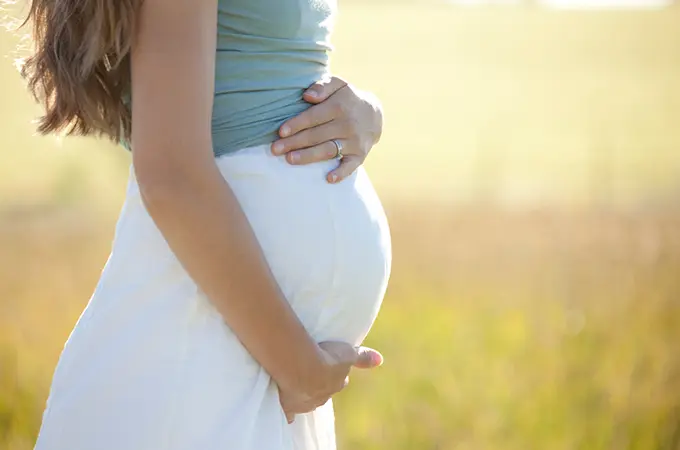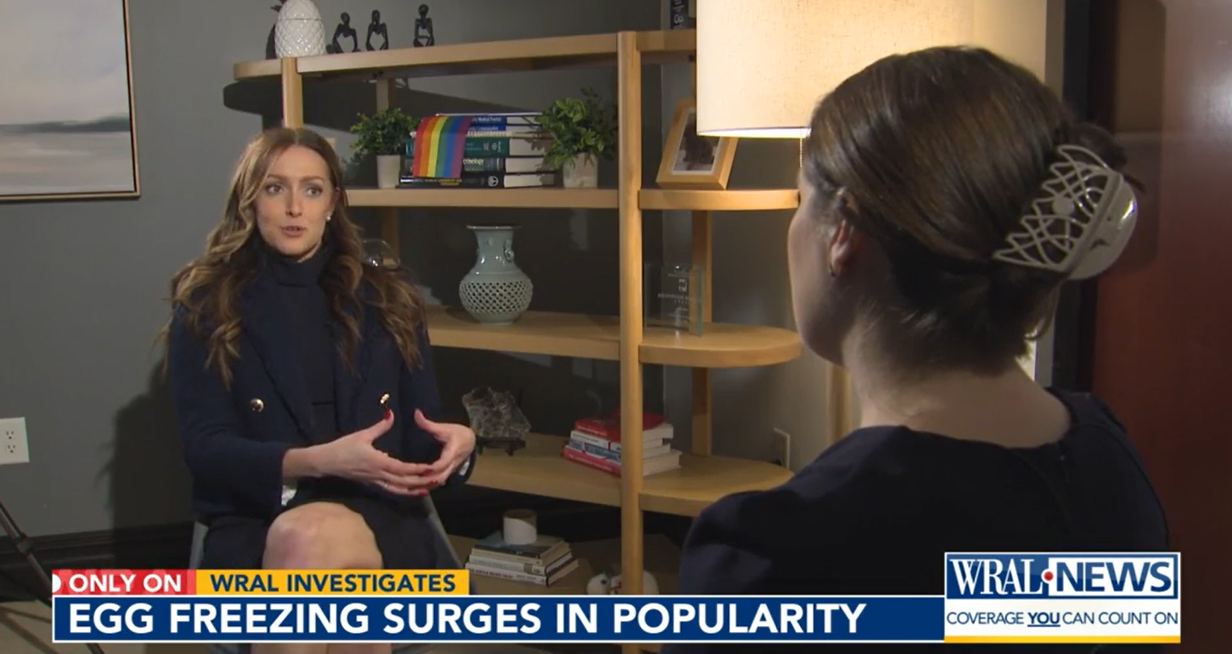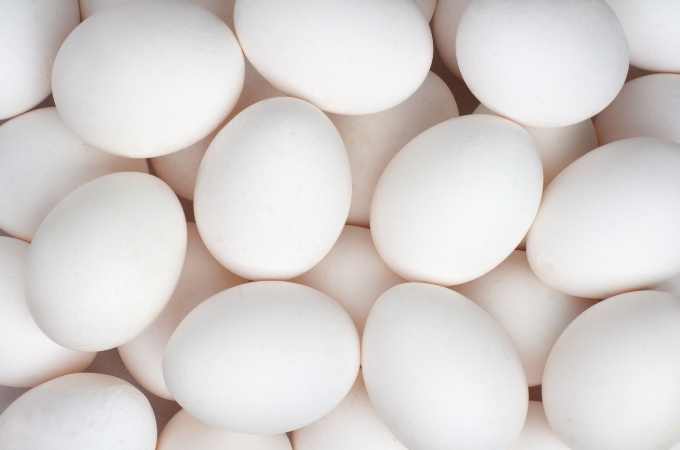Shady Grove Fertility is changing the conversation about egg freezing by publishing its success rates in this month’s issue of Fertility and Sterility, an esteemed medical journal devoted to the subspecialty of reproductive medicine. Until now, the conversation around egg freezing often swirled around the fact that there is no guarantee of a baby if you return to use your eggs, and that egg freezing success rates are hard to find—until now. We now have data from the largest published study of egg freezing success rates in the U.S.—Shady Grove Fertility’s study outlines the success rates of women using frozen eggs for pregnancy.
“Shady Grove Fertility started a dedicated Egg Freezing Program in 2009; ever since, we have worked tediously to improve treatment options—not only to improve the egg freezing technique but also to ensure the best possible outcomes for women when they return to have a baby,” says Dr. Joseph Doyle. “We are proud to be able to publish delivery rates that will better inform women of the opportunities available through egg freezing.”
Egg Freezing Success Rates
Through December 2014, Shady Grove Fertility physicians had performed 1,171 egg freezing cycles for 875 women intending to use their eggs later for in vitro fertilization (IVF) treatment. As of January 2015, 117 of these women returned to undergo 128 IVF cycles, using a total of 1,283 frozen eggs.
As for the results from these 128 IVF cycles, there were 51 pregnancies, resulting in 55 children and 8 more on the way at the time of the study (12 of the pregnancies were twins). In addition, 62 good quality blastocysts remain in storage from these warming cycles for future attempts.
While the team was confident in their chances of positive pregnancy results going into the cycles based on similar research with frozen donor eggs3, the results have confirmed that IVF cycles with frozen eggs perform as well as IVF cycles with fresh eggs.
What are the chances of taking home a baby if I freeze my eggs?
Estimating the probability of egg freezing producing a baby eventually greatly depends on the age a woman decides to freeze her eggs as well as how many eggs she has frozen. Shady Grove Fertility stands behind our research and recommendations—for women younger than 38, we recommend freezing 15 to 20 mature eggs, giving them roughly a 70 to 80 percent chance of at least one live birth. For women 38 to 40 years old, we recommend freezing 25 to 30 mature eggs, giving them a 65 to 75 percent chance of at least one live birth. These recommendations can be individualized according to the specific family building goals of the patients.
The charts below describe the predicted probability of having at least one, two, and three live-born children according to the number of eggs frozen for elective reasons.
Women Ages 30-34 Woman Ages 35-37
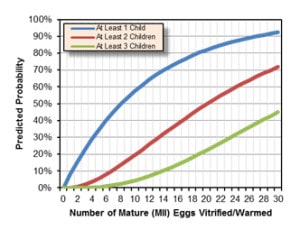
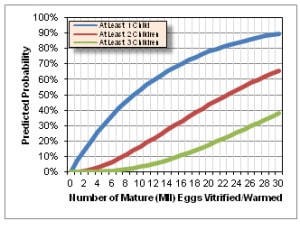
Women Ages 38-40 Women Ages 41-42
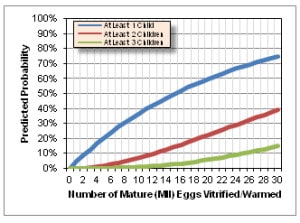
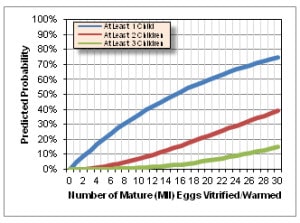
Notes on the Study
Shady Grove Fertility’s Joseph Doyle, M.D., along with Kevin S. Richter, Ph.D., Robert Stillman, M.D., James R. Graham, M.S., Joshua Lim, M.S., and Michael J. Tucker, Ph.D., comprised the study’s research and publication team. The study, “Successful elective and medically indicated oocyte vitrification and warming for autologous in vitro fertilization (IVF), with predicted birth probabilities for fertility preservation according to number of cryopreserved oocytes and age at retrieval” was published in the February edition of Fertility and Sterility.
The overall goal of this study was to measure the probability that women—according to their age at the time of egg retrieval and the number of eggs frozen—will go on to have at least one, two, or three children using their frozen eggs at a later date.
The study design included four different groups: women who electively froze their eggs, women who needed to freeze their eggs unexpectedly during a fresh IVF cycle, couples who electively chose not to fertilize all of their eggs, and women freezing prior to cancer treatment.
The study compared success rates based on the different stages of the process: from thawing the eggs, to fertilizing the eggs through intracytoplasmic sperm injection (ICSI), embryo and blastocyst formation, to implantation of the embryo, and then having a baby. Of the 128 IVF cycles from egg freezing, 32 cycles were for women who had electively frozen their eggs and returned with the desire to achieve pregnancy.
To learn more about the egg freezing success rates and process or for more information, call 1-877-411-9292 to speak with one of our New Patient Liaisons, fill out this form to schedule an egg freezing appointment, or register for one of our upcoming patient educational events.
References:
- Cobo A, Meseguer M, Remohi J, Pellicer A. Use of cryo-banked oocytes in an ovum donation programme: a prospective, randomized, controlled, clinical trial. Hum Reprod 2010;25:2239-46.
- Sole M, Santalo J, Boada M, Clua E, Rodriguez I, Martinez F et al. How does vitrification affect oocyte viability in oocyte donation cycles? A prospective study to compare outcomes achieved with fresh versus vitrified sibling oocytes. Hum Reprod 2013;28:2087-92.
- Trokoudes KM, Pavlides C, Zhang X. Comparison outcome of fresh and vitrified donor oocytes in an egg-sharing donation program. Fertil Steril 2011;95:1996-2000.

